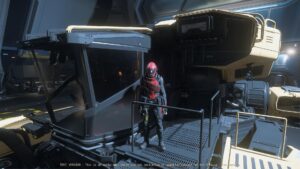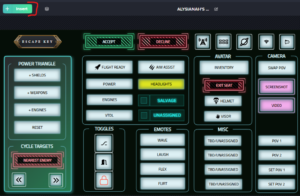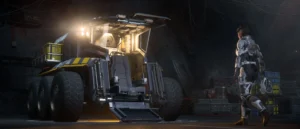Writing and I go back a long way. I used to write scripts for the neighborhood kids to act out when I was around eleven. I participated in the writing publications all throughout my school years and went to college for Mass Communications. But a funny thing happened to me along the way to my career called personal computers. I had a knack for them when they first landed on people’s desks at work. I found out that my love and penchant for the English language extended itself to programming languages. Before I knew it, I was in IT then Business Intelligence then Research and Development, and now Product Management in R&D. I never gave up on writing. I’ve done technical writing where I’m a thrice published author, instructional design because I enjoy teaching people and I’ve kept a blog of one sort or another for the past 20+ years.
KNOWING WHO YOU ARE AS A WRITER IS ESSENTIAL TO YOUR GROWTH.
My creative writing’s been a bit spotty. I have multiple novels in the works that linger for a year at a time before I take them up again. Mastering such a long form on your own can be daunting, even though I’ve taken several writing courses since my college days to help move things along. It often felt like my weaknesses were insurmountable in the amount of time I was willing to dedicate to the craft of writing fiction. My plots can be complicated and I can run out of the emotional steam half way through. I lose the motivation to start a story after outlining it which is what you’re taught to do.
Late 2016, I happened upon a video series by Brandon Sanderson that gave me insight into the type of writer I am. I learned that my style and issues aren’t unique to me or absurd. I’m a gardener/pantser style writer. Meaning, I write by the seat of my pants. Like a gardener, my story develops as I go, growing over time. Detailed outlining diminishes the joy of writing for me. It destroys the story and motivation which causes me to drop an idea dead in its tracks. So while I may not be alone or crazy in my style, it does necessitate I find what works for me, which might be contrary to what’s taught in school.
DEFINED TEMPLATE AND PROCESS THAT WORK FOR ME.
Writing fan-fiction for Star Citizen has helped me tremendously. It provided me with a pre-existing universe to write about and through those efforts, I’ve been able to identify writing tools and processes that work for me. AND for the first time ever, I’ve been able to consistently write shorter fiction, something I’ve wanted to do for a long time but couldn’t quite constrain my ideas to the necessary length. I’m by no means a master writer but I do feel that I’m on my way to improvements and I’d like to share what I’ve developed for myself with others who may be facing the same struggles.
Luckily for me, I’m never short on inspiration for ideas. I’ve never had writer’s block. I’ve never needed writing prompts. I have more story ideas than I can shake a stick at. However, that doesn’t mean I don’t use things to distinguish a specific point of inspiration for a story.
I’m a visual person which is how I ended up in Business Intelligence when it was discovered that I had a knack for visual data analysis. I can “see” correlations. I can look at data and recognize the visual outputs that would express it best. This is the same skill I use for formulating a story from inspiration. To me, they’re part and parcel of the same ability to puzzle things out.
I VISUALIZE A PERSON, PLACE OR THING…
IMAGINE A PAST, PRESENT, AND FUTURE…
Every story that I’ve written has started has either a person or place that popped into my head that felt interesting. A digital image I saw that made me wonder what that would be like if it was real. In the case of Star Citizen, I add to my musings the locations described in the ARK Starmap. What is it like to be there for the average person? What types of challenges would they face?
Distilling these to a fine point my primary sources of inspiration are:
- Things I daydream about
- Digital images from the internet
- Digital images from Pinterest which I keep on a personalized board for future reference
- Locations that interest me in Star Citizen lore
Corralling that idea into a bonafide story is the hardest and most important part. I believe in the saying that ideas are cheap. Anyone can dream up an idea. The proof of the pudding is assembling it into a cohesive tale.
TEMPLATE FACILITATES A PLOT-DRIVEN STORY
It’s easy to get lost in the woods of your idea, words, characters, events and required story structure. As a Meyers-Briggs INFJ, I can get too focused on the puzzle pieces and I lose sight of writing the story. Since we’re rule followers, I used to inadvertently launch down the detailed outline path as most courses, professors and books suggest, forgetting that for me, it would result in a dead-end.
However, there are certain elements required for writing a cohesive story. And if you want to end up where you want to go, you need to know where you’re headed in the first place. To accomplish this without developing an outline, I created a template to capture the minimum elements contained in any story, of any length. These attributes are represented in a template with (4) sections.
IT WORKS FOR ANY LENGTH STORY
Section One helps you solidify the idea. What is the story you’re trying to tell? This is the most important part of the template. You shouldn’t start writing a single word of your story until you can articulate this much!! Completing Section One will save you countless hours of having to edit your plot and the sequence of events because you hadn’t really formulated the story before you started writing it.
The exception noted in the template is the Theme. You may not truly know what it is until you’ve completed a majority of the story. Once you’ve identified the theme you may want to go back and edit your story to make it more apparent IF you feel you REALLY have something distinct you’re trying to impart about the human condition.
REDUCE EDITING TIME – CLARIFY YOUR LOGLINE AND MDQ FIRST
Always start with the logline. This is a one-sentence summary of the whole plot. That’s right, you should be able to reduce your whole idea to a maximum of two sentences. Movies do it all the time. It’s the elevator pitch. It’s the tagline you see on the billboards. Search loglines for your favorite movies to see examples.
Here’s the logline for Gladiator starring Russel Crowe: When a Roman general is betrayed and his family murdered by an emperor’s corrupt son, he comes to Rome as a gladiator to seek revenge. This logline superbly sums up the whole movie. It also leads you directly to the Major Dramatic Question (MDQ), the next most important thing to clarify before you begin.
The MDQ in Gladiator is will he get his revenge? This is the question you must answer by the end of your story. Ideally, it’s at the very end, depicted in a direct showdown with the antagonist/blocker. Your story plot should have the protagonist taking steps toward achieving the MDQ during the course of the story in his/her favor but failing to do so, until the final encounter/showdown/attempt. This is the essence of establishing your plot and conflict. Joe wants X but Y is preventing him from accomplishing it. What lengths will Joe go to in order to achieve X? How much opposition can Y exert? Who wins in the end – X or Y?
ESTABLISHING THE SETTING IS AS IMPORTANT AS THE STORY’S PLOT
Establishing the story’s setting for sci-fi and fantasy is called world building. This is where you specify the time period, dictums and societal norms of the environment your characters are in. We can’t recognize what’s extraordinary if we don’t know what’s common. You need to take the time to clarify these rules for yourself first to ensure consistency in your fiction. And yes, it’s important to do this upfront and play by the rules you set. Readers don’t like Deus Ex resolutions, where you have to solve your plot by the sudden appearance of an all-powerful item, person, etc. that falls from the sky and was never heard of in your story until that moment.
READERS DON’T LIKE DEUS EX RESOLUTIONS
If you knew up front that you were going to use a miraculous device/person as part of the resolution, hints of its existence should have appeared very early or at least midway through the story. Ideally, using an element of foreshadowing. This is satisfying for readers who connect the dots. Sometimes in movies, you’ll see them flashback to the foreshadowing moment to ensure the audience realizes it’s not a Deus Ex event. All of these are things you consider in the Setting section of the template and you add to it as ideas develop while you’re writing.
For me at least, Section Two of my template, plotting the story, is the easy part. However, that might be because I spend the most time defining the story in Section One. By the time I’ve completed Section One, I’ve already visualized all the major plot points. In Section Two, I’m simply jotting them down in chronological order.
Some writers find it easier to plot backward. If they know where they have to end up, it’s easier for them to plot logically what must have preceded it. I’ve done a bit of both in longer form fiction. I may immediately know the beginning and end but have to noodle on what comes in between. Here you want to do what works for you but I caution starting to write your story before completing Section Two. Especially if you’re not a fan of large scale plot editing after the fact.
The only other advice about my template for Section Two is that the Life Today and Inciting Incident are particularly important. If we don’t know what’s normal for the character’s life, we won’t recognize when something happened that tipped their world off center. We won’t recognize the event that established the MDQ which is their quest. It’s imperative that the reader recognizes it so they can cheer them on and become invested in the actions that follow.
The rest of the template is cake and self-explanatory. After the character’s world has been rattled what will they attempt to set it straight? What obstacles will you put in their path to establish conflict? Typically the Dire Straits moment should be the most dramatic and meaningful. This is the last stand attempt at achieving the MDQ, where all hope is lost if they fail.
WRITING STAR CITIZEN FAN-FIC HAS AN EXTRA SECTION
When writing fan-fiction it’s important to readers that you remain authentic to that world and its canon. Unless of course, if you’re intentionally shifting its lore like people do when they change the endings or the outcomes of relationships. In the case of Star Citizen, I use the actual ships, Galactic Guides, Lore Dispatches and the ARK Starmap to ground my stories. Everything else is fair game but I want the elements of the physical universe I depict to be accurate.
An invaluable resource for me in doing this is my own website that contains information from the official ARK Starmap, Galactic Guides, and Dispatches presented in a format that’s searchable and easier to scan all the known star system information on a single screen.
I use my:
- Starmap Matrix to scan systems to see what catches my interest in relation to the story I’m telling.
- Detailed Composition page to see all the known objects in the system (s) I decide to use.
- Route Planner to see ALL possible routes between systems when travel is involved. Unlike the official ARK Starmap, I show every single option which often plays into adding points of conflict such as devising reasons why they have to take the longer or more dangerous route.
All of the above helps to create authenticity in the story for readers who are informed Star Citizen fans. And although I consider my content for ‘casuals’ I know that I have SC lore fans among my followers.
BEGIN PRACTICING THE ART OF STORYTELLING
If you want to take a stab at writing fiction but don’t have a formal training, I think my template is distilled to the essential elements necessary for a story. Although writing short form versus long form such as novels is a very different beast, you can still hone your craft and establish your style and voice by practicing with short fiction. You also have the added benefit of being able to finish more stories in the same period of time as a learning experience.
If you’re interested in writing sci-fi or fantasy, I think doing fan-fic has the benefit of only having to dabble in world-building while focusing on the craft of writing first. When you feel you have sufficient writing practice under your belt, you can stretch your wings toward developing your own worlds. You can access my template as a Google Doc. It’s my prefered format because it allows me to access my story ideas from any device at any time. It’s a convenient method of ensuring little things that pop into your head make it into the story template for safe keeping. I also maintain a Pinterest board of writing tips.










More Stories
Adventure in Salvaging
3.18 PTU Salvage
Create Your Own GameGlass Shard!